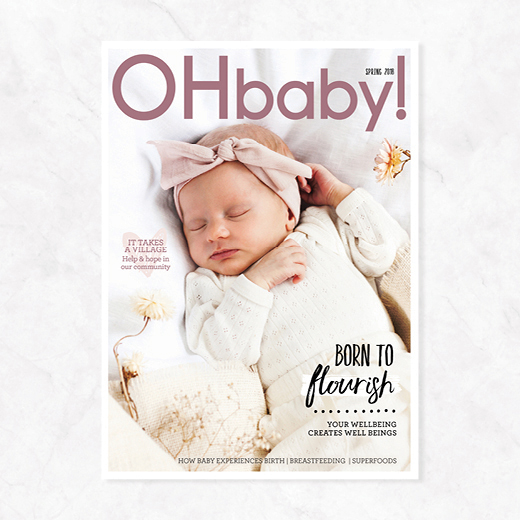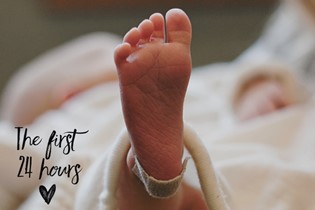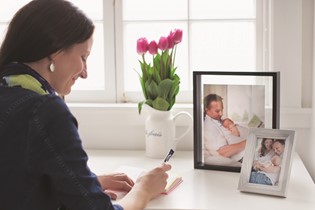Growing superpowers in your child's mind

Miriam McCaleb explains how stopping to simply wonder can grow superpowers of the mind.
We’ve learned a lot about brain development in the course of one generation. We developed neuro-imaging technologies: ways of looking beneath the skull and witnessing the trapeze acts that form superhighways of synaptic connections in our little ones’ brains.
We’ve confirmed that early experiences are extremely important, and that the quality of relationships between babies and their significant people predict oh so much about the trajectory of that baby’s life. Researchers can observe how neurochemicals in the brain react to environment. Brain scans reveal, to use the words of writer and psychology professor Lou Cozolino, how “love becomes flesh”. Researchers have learnt about the ways that different regions of the brain are responsible for different functions. They have found out a lot.
But do you know what we’ve never found? As we’ve learned which regions of the brain develop when and control what, even as we’ve mapped the human genome … we have never found a Mind.
Because our minds are not our brains. Our brains are a physical organ, but our minds…? Hmmmm, where are they? Our minds are always with us, and yet they seem to be invisible. We couldn’t BE without our minds, but where do they even live?
THE BENEFIT OF MIND SIGHT
The best explanation I’ve ever heard for these mind-blowing concepts (‘scuse the pun) comes from Dan Siegel, a clinical professor of psychiatry, and a writer. Dr Siegel talks about the mind as existing between people – it is the third point of a triangle which has ‘Relationships’ and ‘Brain’ as its other corners. It hovers between us, whoever the ‘us’ might be from moment to moment. Whether we notice that or not is optional.

In child development terms, to have a mind is to be able to hold onto someone, even when they are not with us in the room. And the super-important next step – that is, to use a mind consciously – is to be able to use your own mind to contemplate what might be going on in the mind of another. Dan Siegel calls this ability ‘mind sight’ – seeing another’s mind.
Mind sight is a definition of empathy. It’s that concept of walking in someone else’s shoes, a willingness to imagine life from another person’s point of view. This is crucial for a rich, connected life. Empathy is amazing: it’s what enables us to make our dad’s cup of tea just the way he likes it, even if we prefer ours differently. Empathy fuels our ability to provide effective comfort, which is important for wellbeing both in cell and in soul. On a macro level, it reduces crime and protects society’s fabric from staining and fraying.
RECOGNISING INDIVIDUALITY
Some researchers use the term ‘mind-mindedness’ to describe this concept of taking another’s point of view. Specifically, mind-mindedness refers to whether or not a parent is willing (or able) to consider their child as an individual with a mind of their own – and not just an extension of the family. Of course, we exist as members of a family, but we are still ourselves within that greater group. It’s true for us fully grown humans, but sometimes folk forget it’s true for the little fellas, too.
We could ask: is this baby or toddler acknowledged as unique in her own person-hood, or is she only thought of as an addition to a couple’s story? Can the family look past Baby’s likeness to Poppa and recognise that Baby has a mind of his own? Is this infant celebrated as himself, or is his value measured as a Like-getter on parental social media? Ouch!
By the time children develop language, they will assert their own minds, but parents needn’t wait for that milestone to start thinking about this important concept. We can strengthen our own mind-mindedness skills from the time our children are tiny babies. We will benefit, the relationship will benefit, which means babies benefit, too.
The concept of being mindful has gone from existing solely in the domain of the spiritual retreat and has permeated the mainstream culture. Mindfulness is simply the act of noticing (really noticing!) what is happening in any moment. In line at the supermarket, while wiping the kitchen bench. Notice. What are my senses telling me? Are my shoulders relaxed? What are the muscles of my face up to? Just noticing. Meanwhile, mind-mindedness is like a laser-focussed sliver of mindfulness. It’s what you get when mindfulness marries an active, conscious, curious thought process.
FLEXING THE MIND-MINDED MUSCLE
I have learnt a practical (joyful!) activity that parents can practice with their infants. It’s simple, yet profound, with short- and long-term benefits that cannot be overstated. Like brushing your teeth – it doesn’t take long, you always feel better afterward, and you’ll ward off disease. What’s more, it also increases your likelihood of being kissed!
The practice here is the act of sitting, still(ish), with your baby on your body, as you wonder about him. For at least two minutes, twice a day, just like teeth brushing. That’s it. Rest heart-to-heart if that’s comfy, or rest with Baby in your arms, so you’re face-to-face. If it helps, spend a couple of moments moving through that state of mindfulness. Notice what is happening: your breath, the hum of the fridge, the birdsong outside. Just notice. Feel the weight and warmth of your child’s body. Wait for you both to settle. With practice, this might only take seconds.
AND NOW, CONSCIOUS WONDERING
Wonder about Baby’s experience in this moment. Free yourself from wondering about the future, or what you’ll have for dinner. Just for two minutes. Instead, just give in to wondering about Baby’s experience right now. You don’t have to describe your wondering. In fact, don’t even try. Wonder in quiet. Let your mind settle into the conscious wonder of hers.
Wonder how Baby reacts to different types of touch or sound. Wonder what she might be feeling as you sit near that ceiling fan or in that patch of sunshine. Wonder whether she’s noticed the shadows on the wall. Wonder what that snuffly little noise she’s making might mean. Wonder what the soulful meowing of the neighbour’s cat must sound like to someone who doesn’t know about cats, yet.
As you sit, and wonder, you might notice that your breathing slows. As Stuart Shanker, king of self-regulation research, would say: “Calm begets calm”. Slower, calmer breathing from you will mean slower, calmer breathing for Baby. Your heart rate is likely to mimic your slower breath. Hearts and minds connected, just for a few minutes. It’s a beautiful thing.
Developmental psychologist Dr Patricia Champion explains how the benefits of this type of brief, regular wondering practice will extend beyond the time it takes. “Science confirms that babies need a loving, nurturing environment for brains and bodies to grow best. When a parent takes the time to sit and wonder about what their baby may be experiencing, they practise an essential skill for being able to read their baby’s cues and meet their baby’s needs.”
Dr Champion reminds us of the seamless link between brains and bodies – science keeps confirming that it is our whole selves that experience the world. Our whole selves assess danger, sense calm, feel joy, express sadness. Not just our skin, our eyeballs, our prefrontal cortexes or our voice boxes, but the whole lot working in symphony.
This is one of the reasons that Dr Champion advises against trying the two-minute Wonder Practice when you or Baby are hungry or thirsty. This can make it a wee bit tricky to find the right time, especially if you’re a calorie-burning breastfeeding machine (I was hungry almost all the time!). But it’s truly worth seeking those windows of opportunity, taking the time to build this consistent habit into your day.
As your child grows, the practice morphs. Even now, when my youngest is six, I can transform an interaction with her by reminding myself to contemplate the moment from her perspective, to wonder about her mind. My end-of-day grouchiness dissipates when I use my ‘mind sight’ ability to wonder how it must be to have a bedtime story read by a clearly resentful mum. Wondering about her experience helps me to demonstrate kindness.
Wondering about your child massages your mind, and hers. Remember that concept of your minds existing between the two of you? You could think of this practice as giving those invisible minds an opportunity to get to know one another, beyond the physical realm. If that’s a bit ‘woowoo’ for you (I know, any time some-one uses the word ‘realm’, it’s borderline!), know that you and baby will be giving quite the workout to your orbitofrontal cortexes, the region of your brains which is most active in developing empathy.
One final thought, then I’m off to wander and wonder. On the day that I met Dr Champion to talk about neurobiology, I was sporting fantastic nails, having been for a rare manicure. Now, I’m a fairly rugged gal. I stack firewood, I garden, muck out the henhouse, and do all my own stunts. Manicures have always seemed like rather a waste of time. But on this day, I confided a minor revelation I’d had: “I think I finally understand why people get their nails done! It’s a chance to sit quietly in an otherwise hectic life”. She agreed – the process of sitting still, wondering about the life of the young manicurist, and waiting for the polish to dry – that process is as important as the shiny results. And she helped me to see that taking the time to do so is rather like taking the time to sit and wonder, alongside my child. It makes space for our beautiful minds.
|
Miriam McCaleb is the mother of two great girls, a teacher, a researcher, a wife and a writer. She has wanted to describe something as ‘woo woo’ ever since living in California in the ‘90s, and has relished writing this article as an opportunity to namecheck some of her favourite people. Visit her at babygeek.nz. |

AS FEATURED IN ISSUE 43 OF OHbaby! MAGAZINE. CHECK OUT OTHER ARTICLES IN THIS ISSUE BELOW

















